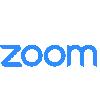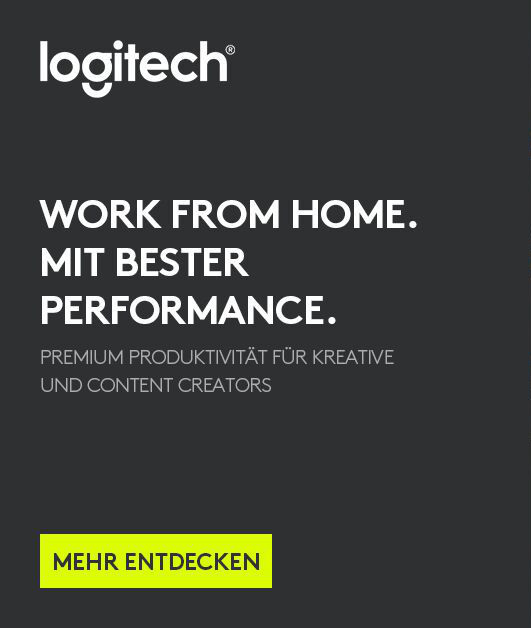Update for Zoom Events
New or enhanced feature
Attendee features
In-person attendee survey eligibility based on check-in status
- Event organizers can send post-session surveys to in-person attendees who physically checked in to a session, regardless of whether they joined the Zoom webinar. Previously, survey eligibility was limited to registrants who joined a session virtually. With this enhancement, if a registrant has a session check-in record with a Checked-in status, they will receive the post-session survey via email and can access it in the event lobby. This feature maintains existing virtual attendee survey eligibility while extending coverage to hybrid and in-person events. This improvement ensures organizers can collect feedback from all session participants, regardless of how they attended.
Enhancements to session cards in lobby
- Attendees can see more relevant session information in the lobby based on the event timeline. Before the event, featured sessions appear first followed by more sessions. During the event day, live sessions display first, then upcoming sessions within 30 minutes, followed by featured and other sessions. Key information and action buttons are organized more intuitively next to session titles, with status indicators for featured, bookmarked, and joined sessions clearly visible. This improved display makes it easier for attendees to find and join the sessions most relevant to them at any point during the event.
Enhancements to multi-session track and filter tags
- Attendees can see visual tags on session cards that identify which tracks and filters are applied to each session. These tags appear on the lobby page, session tabs, and when clicking into a session to view the session card modal. The tags provide clear visual indicators that help attendees quickly identify session categories without having to navigate through different sections. This improvement makes it easier for attendees to understand what sessions belong to specific tracks, enhancing the overall navigation experience for multi-session events.
Enhancements to event lobby for mobile users
- Attendees can experience a more cohesive design when navigating the Zoom Events mobile lobby. The bottom navigation bar icons now align with the latest Zoom App UI, and actions like Pair with Room and Profile Settings have been moved to a top-right menu to streamline the interface. The session detail page enables navigation from speaker profiles to session lists and displays bookmark counts directly in the session list. Search functionality has been added to both the session detail page and speaker list for easier content discovery. These updates create a more intuitive and consistent experience across the Zoom mobile app.
Event setup features
Real-time content streaming in text editor
- Users can see AI content being generated in real time within the rich text editor when using content generation features. Instead of waiting for the full output, the system streams text in increments , allowing users to watch the content appear progressively. During generation, users cannot modify the content until the process is complete. Once generation finishes, users can edit, export, and save the content as usual.
Enhancements to hub poll management
- Hub owners can choose which polls from the web portal to add to their Zoom Events hub. Previously, all polls were automatically imported, creating potential security and privacy concerns. With this update, newly created polls will not automatically appear in existing hubs. Hub owners can select specific polls to display, and remove existing ones they no longer want to share with hub hosts. For new hubs, no polls or stream keys will be displayed automatically, giving hub owners complete control over what resources are available in their hub. The hub owner can enable a setting within the hub poll library to import all their web portal polls automatically if they wish.
Enhancements to event content generation with customizable auto-generation settings
- Event hosts can automatically generate content after session recordings are processed. In the Meeting & webinar tab, under the Webinar recordings section, hosts can enable Content generation with AI companion and select which specific content types they want to automatically generate. When enabled, the system will create content using medium length and all pre-generated topics once the event recording is processed. This setting persists when duplicating events or creating new ones from templates.
Enhancements to content generation with real-time text streaming display
- Users can see content being generated in real-time within the rich text editor after clicking the Generate option in the content library. The streaming generation process displays text token by token, providing immediate visual feedback as content is created. Users cannot edit the content until generation is complete, after which they can make changes, export, or save as desired.
Enhancements to content generation with expanded support in EU hosted accounts
- Account admins can enable content generation features like email compose, smart compose, and content generation for accounts provisioned in Zoom's EU data center infrastructure. The features work identically to other regions and are disabled by default in the web portal.
Hub features
Enhancements to hub team management with CSV upload for licensed hosts
- Account owners and admins can use CSV upload to add licensed hosts to their hub in batches, improving the efficiency of team management. This feature extends the existing CSV upload functionality that was previously only available for free hosts. When uploading a CSV file, the system verifies that each host has the proper licensing before adding them to the hub. If some hosts in the CSV file lack proper licensing, the system will still successfully add all properly licensed hosts while displaying error messages for those that could not be added. This enhancement significantly speeds up the process of adding multiple licensed team members to maximize collaboration flexibility.
Integration features
Enhancements to Video on Demand registration data with Pardot
- Hosts can configure Pardot integration settings for Video on Demand (VOD) recordings through a dedicated configuration page. The page displays registration mapping options that allow users to sync registration data between Zoom Events and Pardot. They can access these settings through a Configure option on the VOD interface, where they can set up field mappings and manage registration workflows.
Email failure webhook notifications
- Developers integrating with Zoom Events can receive webhook notifications when emails fail to send to event attendees. The webhook payload includes essential information such as event ID, template name, attendee email, failure timestamp, and specific error reason. This feature follows the standard Zoom webhook format and authentication, ensuring seamless integration with existing systems. Webhook notifications fire immediately when an email send failure occurs, allowing developers to quickly identify and address delivery issues. This feature must be enabled by Zoom.
Licensing features
Zoom Webinars Plus and Zoom Events support for large meetings event type with 3000 and 5000 capacity
- Event organizers can host meetings with up to 3000 and 5000 participants directly through the Events portal when they have the appropriate Zoom Events and Zoom Webinars Plus licenses. This alignment with core meeting capabilities eliminates the previous workflow that required manual support team intervention for meetings exceeding 1000 capacity.
Enhancements to concurrency settings for events
- Hosts can see more accurate information about event concurrency in the event listing page. The updated copy clarifies that a hub can host one event per the license status. When setting up an event, the default capacity is now set to match the hub's linked license capacity rather than automatically using the highest available capacity. Users can still adjust this capacity based on their concurrent license status. A new disclaimer provides additional context about capacity settings during event setup. These improvements reduce confusion and help users better understand their concurrency limitations.
Changes to Webinars premium features and capacity rules
- Users with both a larger Zoom Webinars license and a lower-capacity Zoom Webinars Plus / Zoom Events license can choose between higher attendee capacity with standard features or premium features at lower capacity when scheduling webinars. This update ensures proper license usage and allows changes before the webinar starts. Learn more about Webinars premium features and capacity rules.
Webinar features
Gallery view scene added to Production Studio for enhanced webinar customization
- Users can add a gallery view scene in Production Studio, allowing them to display more video tiles simultaneously during webinars. Previously, Production Studio only supported spotlighting up to 9 video tiles, but this enhancement enables users to show a gallery view with additional participant videos visible. This new scene type provides greater flexibility for webinar producers who need to showcase multiple participants at once. The gallery view scene helps create more dynamic and inclusive webinar experiences by allowing more participants to be visible on screen.
Enhancements to webinar HD video settings
- Account owners and admins can benefit from improved webinar HD video settings that apply 720p as the default when enabled at the account level. Previously, even when admins enabled 720p for webinars, hosts had to manually select this option during scheduling, often missing this step. With this update, accounts with only 720p enabled will automatically apply this resolution to all webinars without showing a scheduling option.
- Accounts with both 720p and 1080p can manage each resolution separately, with 720p applied automatically when enabled, while 1080p remains an opt-in choice during scheduling. This update standardizes HD video settings to behave like other web settings, reducing confusion and ensuring intended video quality is consistently delivered.
Enhancements to simulive delay start time
- The maximum delay start time has been reduced from 10 minutes to 5 minutes, giving hosts more precise control over when their events begin. Additionally, hosts can select delay times in one-minute increments instead of two-minute increments. This change allows for more flexibility when scheduling simulive events while reducing unnecessary wait times for attendees.


